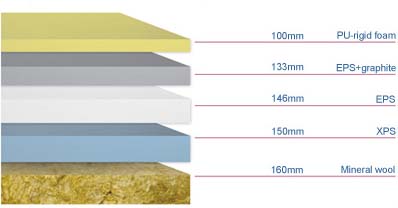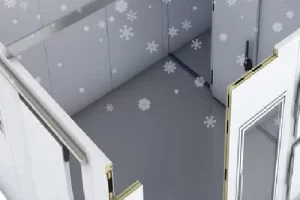What is Cold Room Insulation?
Cold room insulation is a vital component that prevents energy loss in cold rooms by mitigating temperature differences with the surrounding environment. The selection and correct installation of insulation significantly affect the performance, energy efficiency, and longevity of cold room equipment. Hence, choosing the right insulation material is paramount. The construction of cold rooms incorporates diverse insulation materials, some of which are outlined below.
Types of Cold Room Insulation
Cold room insulation can be achieved through various materials. While rock wool was previously used for thermal insulation, contemporary advancements have introduced polymer materials that are now commonly employed. Here are some frequently used insulation materials:
– Polyurethane (PU)
– Polystyrene or Expanded Polystyrene (EPS)
– Extruded Polystyrene (XPS)
Polystyrene insulations are typically manufactured in block forms with varying densities, ideal for insulating the cold room floor. On the other hand, polyurethane is extensively produced as sandwich panels and finds common use in insulating cold room walls and ceilings.
Comparison of Insulation Thickness
Insulation quality is typically evaluated through the manufacturer-declared heat transfer coefficient. A lower coefficient indicates superior insulation. Below, you’ll find the recommended thicknesses for various insulation materials—polyurethane, expanded polystyrene with graphite, expanded polystyrene, extruded polystyrene, and mineral wool—in a cold room. However, selecting the appropriate insulation type depends on several factors, including cold room temperature, ambient temperature, location, and more. It’s advisable to seek expert advice for determining the suitable type and thickness based on these specific variables.
Atlas Refrigeration boasts extensive expertise in designing, manufacturing, and constructing diverse cold rooms. Click on the “cold room price” link to estimate the costs associated with constructing small to medium-sized cold rooms.Top of Form
Heat infiltration increases, the compressor runs longer, electricity consumption rises, and as a result the service life of refrigeration equipment is reduced.
It depends on factors such as the design temperature of the cold room, outside ambient temperature, relative humidity, and geographic location, and should be specified by a qualified specialist.
Proper insulation prevents moisture from entering the cold space, reducing frost buildup on the evaporator and lowering the need for defrosting.
Although polyurethane is more expensive than polystyrene, it significantly reduces energy consumption and extends equipment life, making it more cost-effective in the long run.
Typical errors include unsealed panel joints, not using proper sealing tape, incorrect floor construction, and ignoring moisture resistance, all of which compromise cold room performance.
Related posts
Cold Room Insulation
Portable Cold Store; Design and Construction of Portable Cold Store + Price The portable cold room, also known as
What Is Meat Cold Storage? Meat cold storage, also known as a meat refrigeration facility, is a specialized center dedicated
What is dairy cold storage? Dairy cold storage stands as a pivotal element within the dairy industry, crucial for the
What Is Chicken Cold Storage? Chicken cold storage refers to specialized equipment designed for preserving poultry products like chicken
Fish and Shrimp Cold Storage Systems – Preserving Freshness Fish and shrimp cold storage facilities play an important role in
What is Fruit Cold Storage? A Fruit cold storage is a specialized facility designed to store fruits and vegetables








